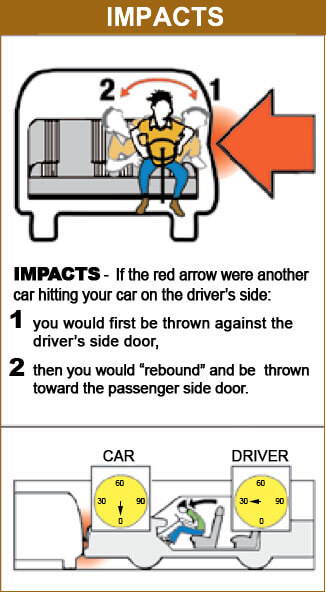Driving Risks
Driving is potentially dangerous for everyone, but more so for teen drivers. The risk of vehicle collisions is higher among teens than any other age group. In fact, per mile driven, teen drivers are nearly 3 times more likely to be in a fatal crash. According to the Center for Disease Control, traffic collisions are the leading cause of death for teens. Lack of experience may lead to judgement errors and increased risk-taking. It takes practice to be able to drive safely. Teens show the most improvement within the first year, and within the first 1,000 miles driven.
Among teen drivers, those at especially high risk for motor vehicle collisions are:
- Males – In 2013, the motor vehicle death rate for teen male drivers and passengers was twice that of their female counterparts.
- Teens driving with teen passengers – The presence of teen passengers increases the collision risk of unsupervised teen drivers. This risk increases with the number of teen passengers.
- Newly licensed teens – Collision risk is particularly high during the first months after getting a DL.
Talk to your teen about avoiding the following risky driving situations:
- Driving under the influence of alcohol and/or drugs
- Drinking any amount of alcohol impairs a person’s Many drugs, legal and illegal, can negatively affect perception and reaction time while driving. The combination of drugs and/or alcohol while driving can be deadly. There is a zero tolerance law in California for teens who drive under the influence of drugs or alcohol.
- High speeds
- Teens involved in severe collisions were usually driving at high.
- Distractions
- Music, cell phones, pets, and passengers should be avoided where As the number of teen passengers increases, the risk of collision increases. The provisional DL restricts carrying teen passengers for the first year or until the driver turns 18 years old.
- It is illegal to use a cell phone or other wireless electronic communication device while driving, unless m a k i n g a c a l l f o r emergency services or on private Furthermore, it is against the law for teens to use hands-free devices while driving.
- Mental State
- Ensure your teen is aware that their emotions can interfere with safe Ensure your teen is in the proper state of mind, not tired, mad, sad, etc.
- Financial Responsibility
- The California Compulsory Financial Responsibility Law requires every driver and every owner of a motor vehicle to maintain financial responsibility (liability coverage) at all times. You must possess evidence of financial responsibility whenever you drive, including the drive test, and must show it to a peace officer after a traffic stop or collision, when asked to do so. If you do not comply with this law, you may have to pay a fine or your vehicle may be impounded.
- Driving at night
- Driving at night requires extensive practice. The highest collision risk for teens occurs on weekend The provisional DLrestricts night driving for the first year or until the driver turns 18 years old.
- Obstructions
Anything that restricts or obscures the driver’s view and ability to scan traffic is Objects blocking the front or side windows, or hanging from the rearview mirror, should be removed.Also, remind your teen to be cautious when driving near blind intersections, parked vehicles, and when driving in unpleasant weather, such as fog, snow, or heavy rain. - Not using a safety belt
- The driver and all passengers must wear a safety belt or you and/or your passenger(s) may be If the passenger is under 16 years old, you may be cited if they are not wearing their safety belt. The graphic illustrates what can happen in a collision. If you are struck from the side, the impact could push you back and forth across the seat. Safety belts and shoulder harnesses keep you in a better position to control the vehicle and may minimize serious injuries. The graphic also illustrates how your vehicle stops when you collide, but you keep going at the same speed you were traveling, until you hit the dashboard or windshield. At 30 mph, this motion is equivalent to hitting the ground from the top of a three-story building.
The graphics below illustrate what can happen in a collision.
